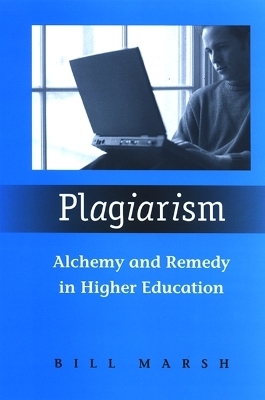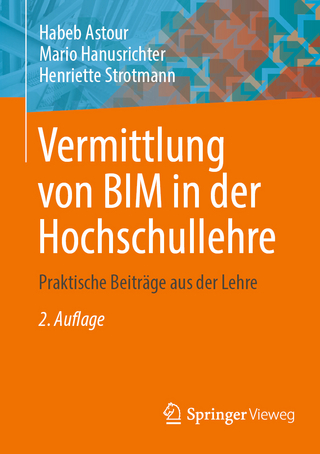
Plagiarism
State University of New York Press (Verlag)
978-0-7914-7038-1 (ISBN)
Plagiarism takes an in-depth look at the history of plagiarism in higher education in light of today's Web-based plagiarism detection services. Challenging the widespread assumption that plagiarism is a simple matter of student cheating or scriptural error, Bill Marsh argues that today's teachers and educational institutions may be cheating themselves and their students in pursuing quick-fix solutions to the so-called epidemic of student plagiarism.
When students submit papers cribbed from materials found on the Web or purchase research papers from Internet paper mills, these acts of sedition must also be recognized, for better or worse, as examples of new-media composition techniques. Examining Web-based plagiarism detection services and software such as Glatt, EVE, Plagiarism-Finder, and Turnitin.com, Marsh contends that these services regulate writing and reading practices in ways consistent with precomputer, even preindustrial, efforts to manage and refine human behavior. As he weaves together print history, education, rhetoric, and communication theory, Marsh shows that the rules governing plagiarism and the proper use of borrowed materials have their origins in early intellectual property law, in the reading practices of twelfth-century monks, and the precepts of medieval alchemy. Through an examination of these prescholastic models, this book calls for a revised approach to academic writing in computer-mediated environments.
Bill Marsh is Assistant Professor of English at St. John's University.
Preface
Acknowledgments
Introduction: Understanding Plagiarism
1. “A Flurry of Fascination”: The (Anti)Plagiarism Cases of Stephen Ambrose and Doris Kearns Goodwin
Anatomy of a Literary Crime
A Strange Mix of Contempt and Sympathy
Temptations and Their Consequences
Of Echoes, Settlements, and Surveillance Machines
Conclusion: Fascination Revisited
2. The Plagiarism Debate: History and Contexts Plagiarism Defined
Authorship, Ownership, and Writing
Plagiarism and “Societal Control”
Conclusion: Writing Conventions
3. Plagiarism in the Early-Twentieth-Century “New University” Learning to Write in the “New University”
The “Golden Era” of Plagiarism Litigation
Plagiarism and the Modern “Research Attitude”
Conclusion: Plagiarism as Error
4. Plagiarism and the Alchemical Tradition Alchemy, Divinity, and Christian Remedy
Remedium and the Birth of Scholastic Reading
Reading Montaigne Reading
Conclusion: Transmutation in the New University
5. How to Avoid Plagiarism How to Read Writing Handbooks
Discipline and Credit
Quote, Paraphrase, and Summary
Conclusion: Synthesis and Alchemical Transmutation
6. Plagiarism, Research Writing, and the Spirit of Inquiry Assaying Montaigne in the Modern Essay
Good Writing Habits and the Experience of Inspired Sermonizing
Plagiarism and the Patchwriting Ferment
Conclusion: Preliminary Recommendations for Research Writing Instruction
7. Internet Plagiarism and Plagiarism Detection Computers, the Internet, and the Plagiarism “Epidemic”
Plagiarism Detection Software
Glatt
EVE
Plagiarism-Finder
Turnitin.com and the Scriptural Enterprise of Plagiarism Detection
Conclusion: Turnitin.com in the “Managed” University
Conclusion: The Ghost of Plagiarism in the Post-Media Machine Notes
Works Cited
Index
| Erscheint lt. Verlag | 22.3.2007 |
|---|---|
| Zusatzinfo | Total Illustrations: 0 |
| Verlagsort | Albany, NY |
| Sprache | englisch |
| Maße | 152 x 229 mm |
| Gewicht | 272 g |
| Themenwelt | Sozialwissenschaften ► Pädagogik ► Erwachsenenbildung |
| ISBN-10 | 0-7914-7038-5 / 0791470385 |
| ISBN-13 | 978-0-7914-7038-1 / 9780791470381 |
| Zustand | Neuware |
| Haben Sie eine Frage zum Produkt? |
aus dem Bereich


